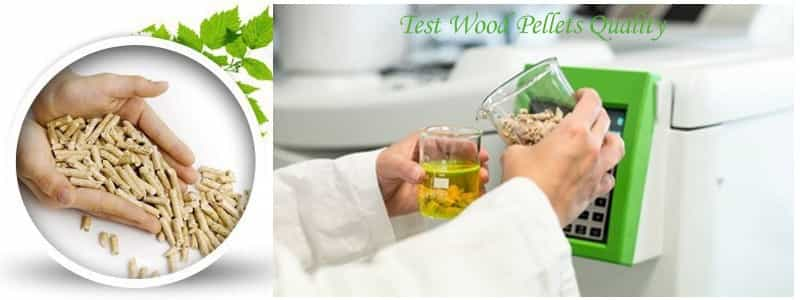News
Simple ways to check wood pellet quality
The quality of wood pellets can vary greatly. When buying wood pellets one should preferably seek a fuel that conforms to one of the classes outlined in the recent IS CEN/Technical Specification 14961:2005 Solid biofuels - Fuel specifications and classes. Consumers should examine the following pellet characteristics:

â—¢ Size: most wood pellets produced as fuel are either 6 or 8 mm in diameter and about 3-4 times the diameter in length.
â—¢ Moisture content: should be between 8-10%.
â—¢ Ash content: wood pellets with good quality have a very low ash content, below 0.7%.
â—¢ Mechanical durability: this is a measure of how well the pellets can stand handling. Every time wood pellets are handled, some of them break and all of them show some wear, which will increase the amount of fines. A durability of 97.5 should be required.
â—¢ Amount of fines: fines hinder pellets from tumbling down to the in-feed auger, thus disturbing fuel feed to the boiler. Boilers are adjusted to burn wood pellets, but if fines arrive in the burning chamber, the flame may get too hot as fines particles burn faster than pellets. In the worst case the ash might sinter, which means that the burner must be cleaned after it has cooled down. The amount of fines should preferably be declared for each bulk delivery, and is measured at the final point in the factory production chain. Fines should preferably be less than 1% by weight. Pellets are usually screened before leaving the production facility. Pellets in bags tend to have less fines than those delivered in bulk. Pellets stored in silos can have an increased amount of fines on delivery.
Binding agents: if the proper feedstock, such as conifer sawdust, is used it should not be necessary to use a binding agent to make wood pellets. However a binding agent is often used where broadleaved species are the material. If an agent has been used, the kind and amount should be declared.
â—¢ Bulk density: this measures the weight of a certain volume of loose wood pellets and should be in the order of 650 kg/m3 loose volume. If the weight istoo low, the pellets have not been compressed enough which might result in increased amounts of fines.
By using smell and visual appearance, and the simple tests outlined here, wood pellet quality can be quickly determined.
â—¢ Put a few handfuls of pellets into a plastic bag and smell the odour from the pellets. They should smell of freshly-cut softwood. If they smell of anything else, beware.
◢ Look carefully at a handful of pellets. They should be light brown in colour, if they are made from clean conifer sawdust. Dark brown particles are a sign of bark and thus an increased amount of ash. Pellets might have a darker outer layer, which is due to friction in the pressing dyes. This is not a problem as long as the pellets are a light colour inside – check by breaking them.
â—¢ Take one long pellet and light it at the tip. The smoke should smell of burning wood. If it smells of anything else, it is not of good quality.
â—¢ Place a small handful of pellets in a glass of water. The pellets should dissolve into sawdust within minutes. If not, a binding agent might have been used or improper feedstock. Once the pellets have been dissolved, swirl the glass and see what settles in the middle of the bottom of the glass. The heaviest particles will settle there. If there is a large amount, it might be possible that dust from a sanding machine has been added to the pellets. This increases the amount of ash and the risk of sintering.
â—¢ Take a vessel larger than 1 litre and weigh it on a kitchen scales. Note the empty weight. Fill the container to the brim with wood pellets and weigh again. Note the weight. Fill the container with water and weigh again. Deduct the weight of the container from both other measurements. Then divide the weight of the pellets by the weight of the water. The result should be between 0.6 and 0.7 kg/litre and preferably around 0.65 kg/litre*. This indicates that the pellets have been pressed at the right pressure. If the pellets have a density below 0.6 kg/litre then they are too soft and break easily, forming fines as a consequence.
Conclusion
These simple tests will prevent most problems with wood pellets. As a general rule, if wood pellets are cheap they are of poor quality and should be avoided. Good quality pellets may be more expensive but are a much better investment as they burn more slowly and efficiently, prolong boiler life, and release fewer emissions. More detailed information about wood pellets, please contact ROTEXMASTER
Categories
News
Contact Us
Contact: Bolida
Phone: 86-0531-67880768
Tel: 86-0531-67880768
E-mail: sales@rotexmaster.cn
Add: Dazhan Village, Zaoyuan Street, Zhangqiu District, Jinan City, Shandong Province, China.